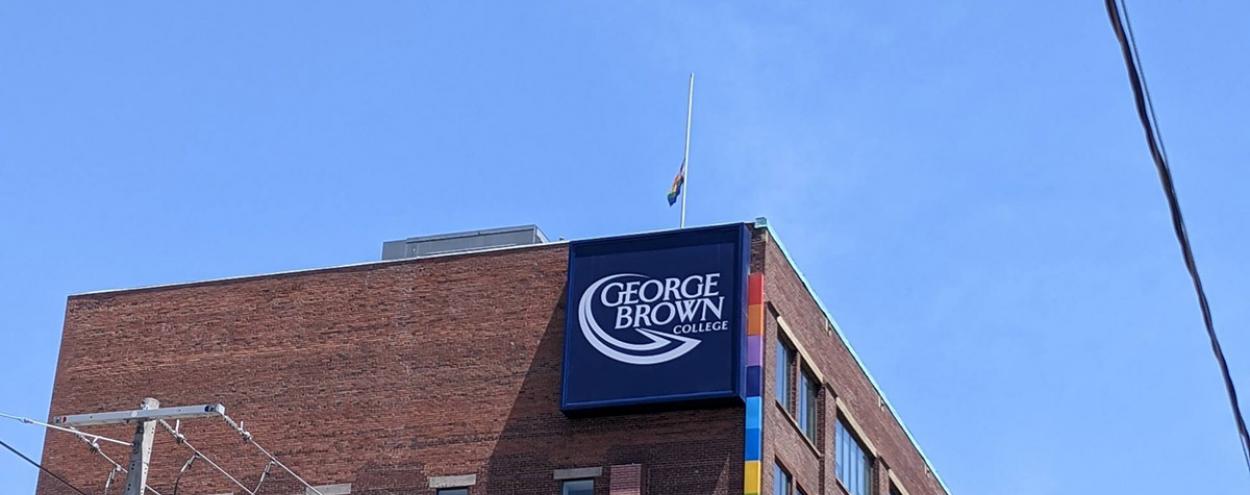
As people across the country mourn the horrifying discovery of a mass grave containing the remains of 215 Indigenous children at the Kamloops Indian Residential School in Tk’emlúps te Secwépemc First Nation territory, we express our condolences and support to our Indigenous students and employees. This is a heartbreaking reminder of the shameful history and decades of trauma caused by residential schools.
“Sadly, we know this is not an isolated occurrence, as virtually all of Canada’s 139 residential schools had a graveyard on or near their grounds,” George Brown College President Anne Sado said. “We hope that one day all the Indigenous children who have died in the residential school system will be accounted for.”
In memory of the 215 children discovered recently, we have lowered the flag at our St. James Campus to half-mast for 215 hours, starting today (May 31).
We recognize that this is a deeply distressing time, particularly for those who have endured residential schools, as well as for generations of their families and communities. We want to remind all students and employees that support is available to you. Indigenous students can connect with Indigenous Student Advising and Counselling and support is available through Counselling and Student Well-being. Employees can connect with our Employee and Family Assistance Program, LifeWorks (formerly Morneau Shepell). There is also counselling support available through the Indian Residential School Survivors Society at 1-800-721-0066 or via their 24/7 Crisis Line at 1-866-925-4419.
“At George Brown College, we remain committed to taking meaningful action towards reconciliation, delivering on CICan’s Indigenous Education Protocol and to supporting all Indigenous students and employees,” adds Sado.
Our campuses are located on the traditional territory of the Mississaugas of the Credit Frist Nation and the land of other Indigenous Peoples that lived here over time. We are grateful to share this land as treaty people who learn, work and live in the community with each other.
